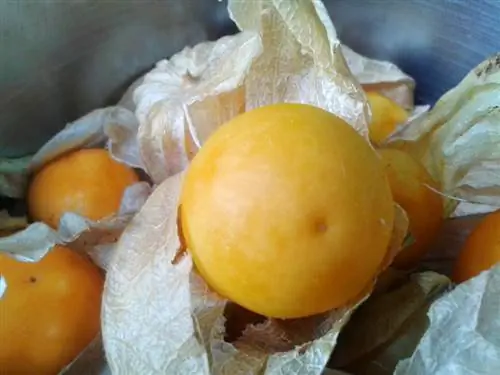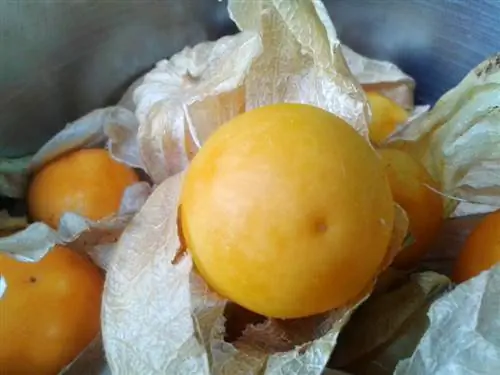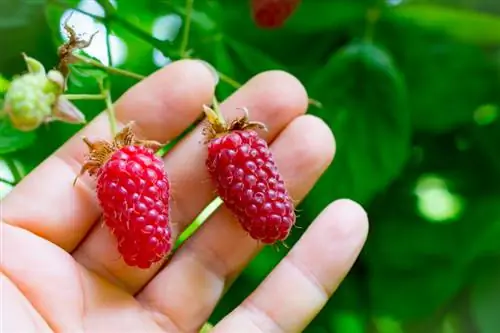- Author admin [email protected].
- Public 2023-12-16 16:46.
- Last modified 2025-01-23 11:20.
The Physalis (also known as bladder cherries) are a genus within the nightshade family. The Chinese lantern flower and the Andean berry are particularly well known in this country, but there are also a number of other, less well-known relatives. The exact number of Physalis species is not known. Information varies between 75 and 100 different varieties, most of which are native to Central and South America.

Which Physalis species are there?
The well-known Physalis species are the Chinese lantern flower (Physalis alkekengi), the Andean berry (Physalis peruviana), the tomatillo (Physalis ixocarpa), the pineapple cherry (Physalis pruinosa) and the strawberry tomato (Physalis philadelphica).
Ornamental Lantern Flower
The well-known lantern flower, which is the only Physalis species to occur in Europe, is primarily grown as an ornamental shrub due to its pretty, brightly colored flowers in autumn. The small fruits are considered poisonous, although the spirits also argue here. But whether poisonous or not: the berries of Physalis alkekengi, the plant's Latin name, don't taste particularly good. This means there is no risk of accidentally consuming large quantities. Also in contrast to the other Physalis species, the rhizomes (=roots) of the lantern flower are hardy.
Delicious Andean berry (Physalis peruviana)
In contrast to the berries of the lantern flower, the slightly larger fruits of the Andean berry, which when ripe have a very strong orange-red color, taste refreshingly sweet and sour, juicy and aromatic. The plant, also known as Cape gooseberry, originally comes from the Andes and is grown in subtropical areas around the world. But the Andean berry also thrives in Germany, it just doesn't tolerate frost. One plant can produce up to 300 berries.
Rare species
In addition to the two Physalis species mentioned, there are numerous others, some of which are only processed locally in their home countries as fruit or vegetables or enjoyed raw. The following three varieties mentioned as examples are likely to produce a rich harvest even in our climatic conditions.
- Tomatillo (Mexican earth cherry, Physalis ixocarpa)
- Pineapple cherry (Physalis pruinosa)
- Strawberry tomato (Physalis philadelphica)
No salsa without tomatillo
The Mexican tomatillo in particular is of great culinary importance. In Mexico, the pulp is used to make sauces and pastes seasoned with chili, which are used as an addition to meat dishes and tortillas and as a spread. The fruit juice is consumed as a drink. The tasty, vitamin C-rich berries are usually cooked green or steamed. Ripe fruits are used to make jam and can be eaten raw out of hand or as part of salads.
Tips & Tricks
No matter what type of Physalis it is: The rampant plants can be wonderfully combined with bluebells, asters and chrysanthemums.






